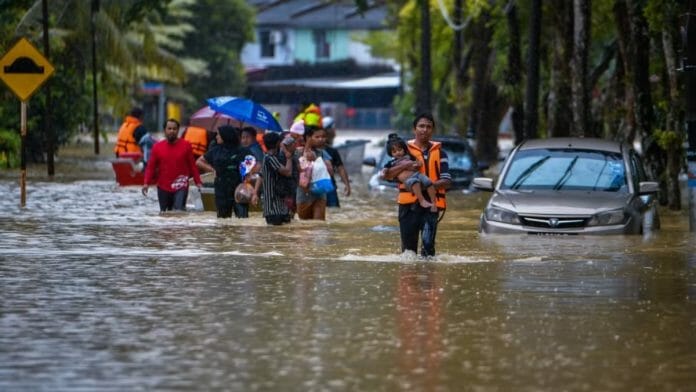Several sovereigns in the Asia-Pacific region are highly exposed to physical risks from climate change, while their capacity for adaptation is limited, particularly those with lower GDP per capita, weaker governance and infrastructure preparedness. Fitch Ratings believes international financing for adaptation and green transition purposes may help fill funding gaps for some sovereigns at the margins, but this is likely to be a small portion of overall funding needs.
Region Most Exposed to Flooding Risk
The Ratings agency thinks south and south-east Asian populations and economies are the most exposed to flooding risks in APAC. Data from INFORM show that Vietnam stands out among south-east Asian nations as being highly prone to flooding risks, while the Philippines is one of the most exposed to risks from storms such as tropical cyclones. In south Asia, Bangladesh is the most prone to the risk of flooding1
.
The materialisation of climate risks in these regions could lead to significant economic losses. The resettlement of people and
buildings from flood-prone areas could give rise to significant fiscal costs for some sovereigns, in particular, Vietnam. These costs could be a negative rating driver for some sovereigns, particularly for those with limited fiscal space.
Rating Implications from Physical Risks
Sovereign ratings usually put more weight on the near-to-medium term, which is more relevant for creditworthiness. The impact of climate change’s physical risks is likely to lead to more rating changes when these effects become clearer and more material. The degree of materiality of physical risks differs across sovereigns. For instance, Maldives faces an existential risk from a rise in sea levels. Sovereigns more vulnerable to physical risks, with weak adaptation capacity, are likely to be under negative rating pressure. This puts many sovereigns in south and south-east Asia at risk of negative rating action, with Singapore as the exception.
Physical risks are already captured in our sovereign rating model (SRM) to an extent through macroeconomic and fiscal indicators. For instance, ex-post additional government expenditure arising from dislocation and rebuilding costs due to flooding could add to fiscal deficits and government debt. Fiscal deficit-to-GDP and general government debt-GDP ratios are included in the SRM.
Fiscal buffers are constrained for most economies in south and south-east Asia, as their government debt is close to, or above, the peer median and revenue mobilisation is weak. This could become a negative rating driver as climate risks become more severe.









